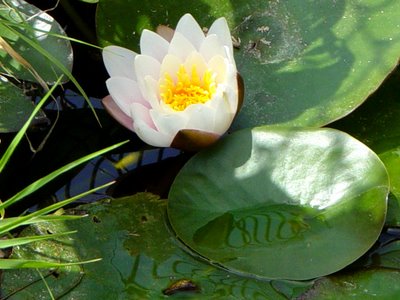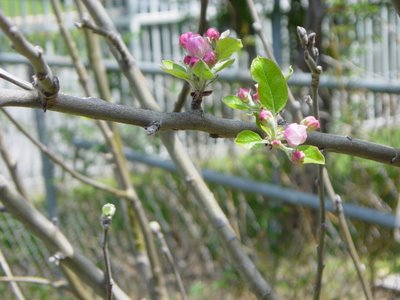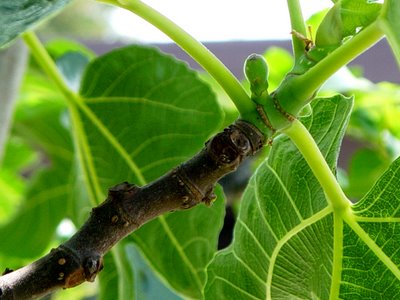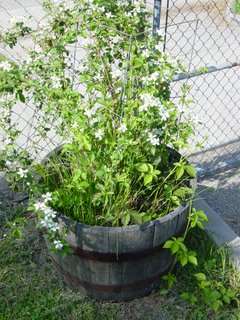 The first time we put a crop in the ground we always learn some lessons about how not to plant it, or how best to harvest, or how not to harvest it, etc. When it came to lettuce, we pulled some early plants to thin the rows and
The first time we put a crop in the ground we always learn some lessons about how not to plant it, or how best to harvest, or how not to harvest it, etc. When it came to lettuce, we pulled some early plants to thin the rows and  put them into salads along with fresh green onions and just-picked broccoli. Then we pulled some some grown heads before we discovered that lettuce is best harvested by cutting the head off at the ground.
put them into salads along with fresh green onions and just-picked broccoli. Then we pulled some some grown heads before we discovered that lettuce is best harvested by cutting the head off at the ground.Having cut the last two heads, the root-stump remaining has, in each case, sprouted five new heads. Oddly, both stumps have sprouted five heads each, although they are different varieties of romaine lettuce.
How Our Lunch Became Dirt
All last summer, grass clippings, leaves, and the contents of the kitchen counter compost bin went into the outdoor bin. (The kitchen-counter bin takes all the vegetable scraps we create making meals, bread products, coffee grounds and filters and the like -- rather than throw them into the pay-to-throw trash. )
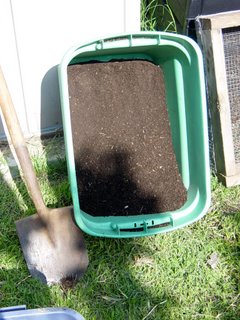 Somewhere around the Autumnal Equinox (Sept. 22 or so) I shut that bin down and started a second winter bin. The summer bin was chock full of grass, newspaper strips, and the aforementioned stuff, full to the top. Aerated occasionally over the winter, it had been cooking all summer and was left to finish off for six months.
Somewhere around the Autumnal Equinox (Sept. 22 or so) I shut that bin down and started a second winter bin. The summer bin was chock full of grass, newspaper strips, and the aforementioned stuff, full to the top. Aerated occasionally over the winter, it had been cooking all summer and was left to finish off for six months.Last weekend I began to clear out the bin. It was only about half full, now, but instead of leaves and grass and coffee grounds we had lovely rich compost. New soil, in a word.
The summer bin has produced about 1o gallons so far, and should make a similar amount when I finish cleaning it out. Soon, around the solstice at the end of June, we will let the winter bin cook and start filling the summer bin.
The winter bin only needs to cook for three or four months over summer due to the heat; in fall we will clean it out, reopen it, and close the summer bin for six to nine months.
It all seems like a lot of work, but it isn't. And by putting much of our compostable rubbish back onto the earth here at home, rather than sending it to a landfill, we add to the nutrients of our yard.


